Sony CECH-3008B, CECH-3008B-SR User Manual

Instruction Manual
Руководство по эксплуатации
Before using this product, carefully read all product documentation and retain it for future reference.
Перед использованием продукта внимательно прочтите документацию и сохраните ее для дальнейшего использования.
CECH-3008A |
|
CECH-3008B |
4-287-484-51(1) |

WARNING
To avoid electrical shock, do not open the cabinet. Refer servicing to qualified personnel only.
Caution
Use of controls or adjustments or performance of procedures other than those specified herein may result in hazardous radiation exposure.
The use of optical instruments with this product will increase eye hazard.
CLASS 1 LASER PRODUCT
LASER KLASSE 1 PRODUKT
This appliance is classified as a CLASS 1 LASER product under IEC60825-1:2007.
The manufacturer of this product is Sony Computer Entertainment Inc., 1-7-1 Konan, Minato-ku Tokyo, 108-0075 Japan.
Distributed by Sony Computer Entertainment Europe Ltd, 10 Great Marlborough Street, London, W1F 7LP, United Kingdom.
Seizures induced by light stimulation (Photosensitive Epilepsy)
If you have an epileptic condition or have had seizures, consult your doctor prior to playing. Some individuals may experience eye soreness, altered vision, migraine, muscle twitching, convulsion, blackout, loss of awareness or disorientation when exposed to flashing or flickering lights or other light stimulation on a television screen or while playing video games. If you experience any of the above symptoms while playing, discontinue use immediately and consult your doctor.
Stop playing immediately when you experience the following symptoms
In addition to the above symptoms, whilst playing if you have a headache, dizziness, nausea, fatigue, similar symptoms to motion sickness, or if you feel a discomfort or pain in any body part such as eyes, ears, hands, arms, feet, discontinue use immediately. If the condition persists, seek medical attention.
Radio waves
Radio waves may affect electronic equipment or medical devices (for example, pacemakers), which may cause malfunctions and possible injuries.
If you use a pacemaker or other medical device, consult your physician or the manufacturer of your medical device before using the wireless networking feature (Bluetooth® and wireless LAN).
Do not use the wireless networking feature in the following locations:
–Areas where wireless network use is prohibited, such as in hospitals. Abide by medical institution regulations when using the system on their premises.
–Areas near fire alarms, automatic doors and other types of automated equipment.
2

3D images
Some people may experience discomfort (such as eye strain, eye fatigue, or nausea) while watching 3D video images or playing stereoscopic 3D games on 3D televisions. If you experience such discomfort you should immediately discontinue use of your television until the discomfort subsides.
Generally we recommend that you avoid prolonged use of your PlayStation®3 system and take 15 minutes breaks during each hour of play. However, when playing stereoscopic 3D games or watching 3D video, the length and frequency of necessary breaks may vary from person to person – please take breaks that are long enough to allow any feelings of discomfort to subside. If symptoms persist, consult your doctor.
The vision of young children (especially those under six years old) is still under development. Consult with your child’s doctor or optometrist before allowing young children to watch 3D video images or play stereoscopic 3D games. Adults should supervise young children to ensure they follow the recommendations listed above.
System software
The System Software included within this product is subject to a limited licence from Sony Computer Entertainment Inc. Refer to http://www.scei.co.jp/ps3-eula for further details.
About national export control
This product may fall within the scope of national export control legislation. You must comply fully with the requirements of such legislation and of all other applicable laws of any jurisdiction in relation to this product.
GB
WARNING
3

Table of contents
WARNING......................................................................................... |
2 |
Precautions ....................................................................................... |
5 |
Online information about the PS3™ system ................................... |
10 |
XMB™ (XrossMediaBar) menu....................................................... |
11 |
Part names ............................................................................... |
12 |
Getting started.......................................................................... |
13 |
Connection methods...................................................................... |
13 |
Performing initial setup of the system software.............................. |
15 |
Video output on the PS3™ system................................................ |
16 |
Connecting digital audio devices ................................................... |
20 |
Turning the PS3™ system on and off....................................... |
21 |
Using the wireless controller..................................................... |
22 |
Playing content ......................................................................... |
24 |
Blu-ray Disc™ (BD)/DVD/CD ......................................................... |
24 |
Playing content on USB devices.................................................... |
25 |
File formats that can be played or viewed...................................... |
25 |
Playing games .......................................................................... |
26 |
Game compatibility ........................................................................ |
26 |
Playing games ............................................................................... |
26 |
Controller settings.......................................................................... |
26 |
Saved data for PlayStation®3 format software ............................... |
27 |
Saved data for PlayStation® format software ................................. |
27 |
Adjusting network settings........................................................ |
28 |
Adjusting network settings (wired) ................................................. |
29 |
Adjusting network settings (wireless)............................................. |
29 |
Adjusting custom settings .............................................................. |
31 |
Connecting to the Internet ........................................................ |
32 |
Using the Internet browser............................................................. |
32 |
Viewing the user’s guide ................................................................ |
32 |
Creating a PlayStation®Network account....................................... |
32 |
PS3™ system updates............................................................. |
33 |
Using the on-screen keyboard.................................................. |
34 |
Parental control ........................................................................ |
35 |
Replacing the hard disk............................................................ |
36 |
Backing up data ............................................................................. |
36 |
Removing the hard disk ................................................................. |
37 |
Replacing the hard disk ................................................................. |
38 |
Reinstalling the system software ................................................... |
39 |
Restoring data that has been backed up ....................................... |
40 |
Transferring data to another PS3™ system / |
|
restoring the system ................................................................. |
41 |
Transferring data to another PS3™ system ................................... |
41 |
Restoring the PS3™ system.......................................................... |
41 |
Before disposing of or transferring the PS3™ system ................... |
41 |
Before requesting service......................................................... |
42 |
Specifications.................................................................................. |
47 |
GUARANTEE.................................................................................. |
50 |
Copyright and trademarks............................................................... |
52 |
4

Precautions
Safety
This product has been designed with the highest concern for safety. However, any electrical device, if used improperly, has the potential for causing fire, electrical shock or personal injury. To help ensure accident-free operation, follow these guidelines:
Observe all warnings, precautions and instructions.
Regularly inspect the AC power cord for damage and for dust build-up around the power plug or electrical outlet.
Stop use, unplug the AC power cord from the electrical outlet and disconnect any other cables immediately if the device functions in an abnormal manner, produces unusual sounds or smells or becomes too hot to touch.
Contact the appropriate PlayStation® customer service helpline which can be found within every PlayStation®3 software manual.
Use and handling
Use in a well-lit area and keep a safe distance from the TV screen.
Avoid prolonged use of the PS3™ system. Take a 15-minute break during each hour of play.
Avoid playing when you are tired or need sleep.
Stop using the system immediately if you begin to feel tired or if you experience discomfort or pain in your hands or arms while operating the Wireless Controller. If the condition persists, consult a doctor.
If you experience any of the following health problems, discontinue use of the system immediately. If symptoms persist, consult a doctor.
–Dizziness, nausea, fatigue or symptoms similar to motion sickness
–Discomfort or pain in a part of the body, such as eyes, ears, hands or arms
Keep the system and accessories, including cable ties and fasteners, out of the reach of small children.
Do not connect cables other than a USB cable while the system is turned on (power indicator lit solid green).
Do not touch the system or connected cables or accessories during an electrical storm.
Do not use the system or accessories near water.
Do not allow liquid, small particles or other foreign objects to get into the system or accessories.
Do not touch the connectors of the system or accessories.
Do not expose the system or accessories to dust, smoke or steam. Also, do not place the system in an area subject to excessive dust or cigarette smoke. Dust build-up or cigarette smoke residue on the internal components (such as the lens) may cause the system to malfunction.
Do not expose the system or accessories to high temperatures, high humidity or direct sunlight.
Do not place the system or accessories on surfaces that are unstable, tilted or subject to vibration.
Do not set the system other than in the vertical or horizontal position. When setting the system in the vertical position, use the vertical stand (sold separately) for this model of the system. Also, do not change the position while the system is turned on.
Be careful when carrying the system. If you do not have a good grip, the system may drop causing potential damage or injury.
Do not move or change the position of the system with a disc inserted. The vibration may result in scratching of the disc or the system.
Do not turn off the system while data is being saved on or loaded from the hard disk.
Do not stand on or put objects on the system, and do not stack the system with other devices.
Do not place the system and connected accessories on the floor or in a place where they may cause someone to trip or stumble.
Do not allow bodily contact with the system or air from the system vents for an extended period of time while in use. Extended contact under these conditions may cause low-temperature burns.
GB
Precautions
5

Precautions
When connecting the system to a plasma or projection* TV, do not leave a still image on the TV screen for an extended period of time, as this may leave a faint image permanently on the screen.
*Except LCD screen types
Parents are encouraged to monitor children in online activities to ensure safe and responsible Internet usage. Refer to http://www.ps-playsafeonline.com for further details.
Notes on safety when using the DUALSHOCK®3 Wireless Controller*
Do not use the vibration function if you have any ailment or injury to the bones, joints or muscles of your hands or arms. If you have an ailment or an injury, do not play such titles using the DUALSHOCK®3 Wireless Controller unless you have set the vibration function to [Off].
When using the motion sensor function of the Wireless Controller, be cautious of the following points. If the controller hits a person or object, this may cause accidental injury or damage.
–Before using the motion sensor function, make sure you have enough space to move around.
–Firmly grip the Wireless Controller to prevent it from slipping out of your grasp and causing damage or injury.
–When using the Wireless Controller with a USB cable, ensure that the cable cannot hit a person or any object, and do not pull the cable out of the PS3™ system whilst playing.
* These notes also apply to other controllers.
Vents
Do not block any vents. To maintain good ventilation, follow the guidelines below:
Place the system at least 10 cm away from a wall surface.
Do not place on a carpet or rug with long fibres.
Do not place in a narrow or cramped space.
Do not cover with cloth.
Do not allow dust to build up on the vents.
AC power cord use
To help ensure safe operation, regularly inspect the AC power cord. If damaged, stop use immediately and contact the appropriate PlayStation® customer service helpline which can be found within every PlayStation®3 software manual.
Do not use a power cord other than the supplied AC power cord. Do not modify the cord.
Do not touch the plug of the AC power cord with wet hands.
Protect the AC power cord from being walked on or pinched particularly at plugs, expansion receptacles and the point where the cord exits from the system.
Do not place heavy items on the cord.
Do not place the AC power cord near heating equipment and do not expose the cord to heat.
Do not allow dust or foreign matter to build up around the AC IN connector. Before connecting or plugging in the AC power cord, check that there is no dust or foreign matter in or on the power plug or connecting end of the cord, the electrical outlet or the AC IN connector on the system rear. If the plug or connector becomes dirty, wipe off with a dry cloth before connecting.
Unplug the AC power cord from the electrical outlet before cleaning or moving the system, or when you do not intend to use the system for an extended period of time. When disconnecting, grasp the power cord by the plug and pull straight out of the electrical outlet. Never pull by the cord and do not pull out at an angle.
Do not connect the AC power cord to a voltage transformer or inverter. Connecting the AC power cord to a voltage transformer for overseas travel or an inverter for use in an automobile may cause heat to build up in the system and may cause burns or a malfunction.
6

Never disassemble or modify the system or accessories
Use the PS3™ system and accessories according to the instructions in the product documentation. No authorisation for the analysis or modification of the system or accessories, or the analysis and use of its circuit configurations, is provided. Unauthorised modification of the system or accessories will void your warranty. There are no user serviceable components inside the PS3™ system (the supplied hard disk may be removed but not disassembled or modified). Additionally, there is a risk of exposure to laser radiation as well as to electrical shock.
Network
A broadband Internet connection is required to connect to a network.
User is responsible for Internet service fees. For details, refer to the information provided in your service contract or contact your Internet service provider.
Use only an Ethernet cable compatible with 10BASE-T, 100BASE-TX or 1000BASE-T networks. Do not use a cord for a standard residential telephone line or cables of types other than those mentioned here. Using the wrong type of cord or cable can cause more electrical current than necessary to flow through the LAN connector, which may lead to heat build-up, fire or malfunction.
Wireless networking feature
The 2.4 GHz range of radio waves used by the wireless networking feature of this product is a range shared by various devices. This product has been designed to minimise the effect of other devices using the same range. However, in some cases interference from other devices may reduce the connection speed, shorten the signal range or cause the connection to be terminated unexpectedly.
When using the PS3™ system’s scan function to select a wireless LAN access point, access points that are not intended for public use may be displayed. Only connect to an access point that you are authorised to use, or one that is available through a public wireless LAN or hotspot service.
Moisture condensation
If the system or disc is brought directly from a cold location to a warm one, moisture may condense on the lens inside the system or on the disc. Should this occur, the system may not operate properly. In this case, remove the disc and turn off and unplug the system. Do not put the disc back in until the moisture evaporates (this may take several hours). If the system still does not operate properly, contact the appropriate PlayStation® customer service helpline which can be found within every PlayStation®3 software manual.
Cleaning
For safety reasons, before cleaning the system or connected accessories, disconnect the AC power cord from the electrical outlet.
Exterior surfaces (plastic cover of system and Wireless Controller)
Follow the instructions below to help prevent the product exterior from deteriorating or becoming discoloured.
Wipe with a soft, dry cloth.
Do not apply insecticides or other volatile substances.
Do not place any rubber or vinyl materials on the product exterior for an extended period of time.
Do not use solvents or other chemicals. Do not wipe with a chemically-treated cleaning cloth.
GB
Precautions
7

Precautions
Vents
When dust accumulates in the system vents, remove the dust with a low-powered vacuum cleaner.
Connectors
Do not use when the connectors of the system or the AC power cord are not clean. If used when dirty, the flow of electrical current may be obstructed. Remove the dirt with a dry cloth.
Discs
Note on compatibility
Some media may have region or territorial restrictions and may not work with your system. See media packaging for details.
Handling
Do not touch the disc surface when handling a disc; hold it by the edges.
Do not stick paper or tape onto discs and do not write on discs.
Fingerprints, dust, dirt or scratches on the disc can distort the picture or reduce sound quality. Always handle carefully and check that discs are clean before use.
Storage
Do not expose discs to high temperatures, high humidity or direct sunlight.
When discs will not be used for an extended period of time, store them in their cases. Stacking uncased discs or storing them at an angle can cause them to warp.
Cleaning method
Clean discs with a soft cloth, lightly wiping from the centre outwards.
Do not use solvents, record cleaners, anti-static spray or other chemicals as these can damage the discs.
8

GB
Precautions
9
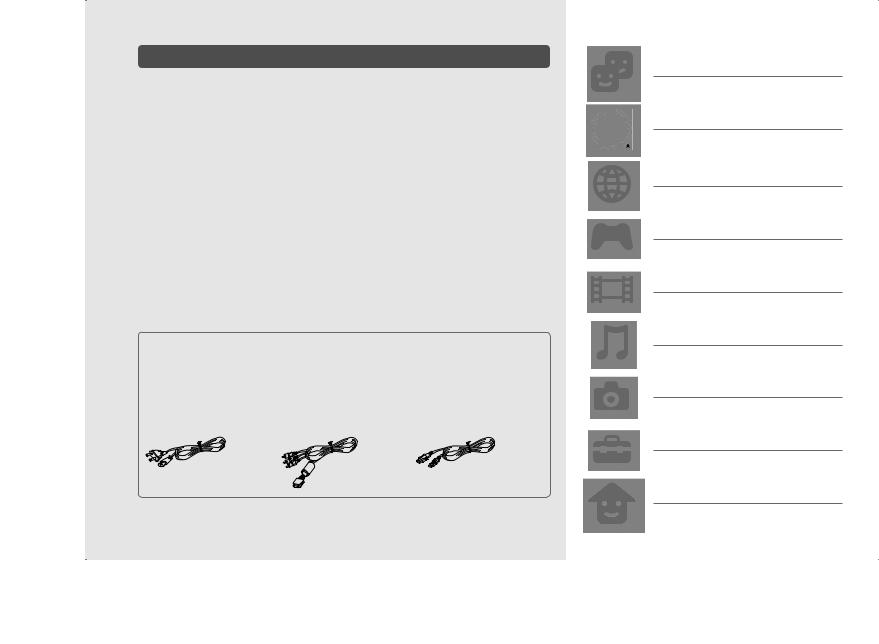
Online information about the PS3™ system
This manual explains hardware features and provides basic information about how to set up and operate the PS3™ system, including warnings and precautions for the safe and proper use of the system. You can also access the following information available on the Internet.
Online user’s guide eu.playstation.com/ps3/support/manuals
This guide contains detailed information about using the PS3™ system.
System software updates eu.playstation.com/ps3/support/system-software/
This site provides the latest information about system software updates.
PlayStation®3 official site eu.playstation.com
The official site for PlayStation®3 products provides the latest information about software titles and hardware accessories.
Support eu.playstation.com/ps3/support/
The official site for PlayStation® product support provides the latest questions and answers about your product.
Check that you have all of the following items. If any items are missing, contact the appropriate PlayStation® customer service helpline which can be found within every PlayStation®3 software manual.
PlayStation®3 system |
|
DUALSHOCK®3 Wireless Controller |
Printed materials |
|
|
AC Power Cord |
AV Cable |
USB Cable |
Information about system functionality and images published in this document may vary from those for your PS3™ system, depending on the system software version in use.
10
Friends
Chatting and exchanging messages
PlayStation®Network
Using PlayStation®Network services
Network
Connecting to the Internet
Game
Playing games
Video
Playing video
Music
Playing music
Photo
Displaying images
Settings
Adjusting PS3™ system settings
Users
Selecting users to log in to the PS3™ system

XMB™ (XrossMediaBar) menu
The PS3™ system includes a user interface called XMB™ (XrossMediaBar).
PS button  :
:
Displays the XMB™ menu
Turns the system on/off
Quits a game
Category
Directional buttons:
Used to select on-screen categories/items
Item
Options menu |
Control panel |
Displayed by selecting an icon and |
Displayed by pressing the button during |
pressing the button |
content playback |
 button:
button:
Displays the options menu/control panel
 button:
button:
Cancel an operation
 button:
button:
Confirm the selected item
11
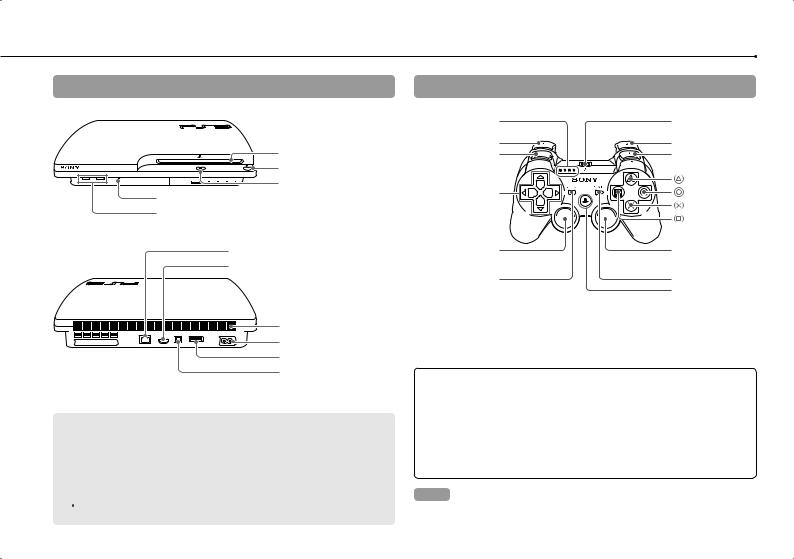
Part names
System front / rear
Disc slot
Power button
Eject button
HDD access indicator
USB connectors
LAN connector
HDMI OUT connector
Vent
AC IN connector
AV MULTI OUT connector
DIGITAL OUT (OPTICAL) connector
 Caution
Caution
Do not use the system in a closed cabinet or other locations where heat may build up. Doing so may cause the system to overheat and may lead to fire, injury or malfunction.
If the system’s internal temperature becomes elevated, the power indicator will flash alternately in red and green. In this case, turn off the system
( page 21) and leave it unused for a while. After the system cools down, move it to a location with good ventilation, and then resume use.
page 21) and leave it unused for a while. After the system cools down, move it to a location with good ventilation, and then resume use.
DUALSHOCK®3 Wireless Controller
Port indicators |
USB connector |
L2 button |
R2 button |
L1 button |
R1 button |
|
button |
Directional |
button |
buttons |
button |
|
button |
Left stick/ |
Right stick/ |
L3 button* |
R3 button* |
SELECT button |
START button |
|
PS button |
* The L3 and R3 buttons function when the sticks are pressed.
Notices
Do not place the system in an area subject to excessive dust or cigarette smoke. Dust build-up or cigarette smoke residue on the internal components (such as the lens) may cause the system to malfunction.
Do not move or change the position of the system while the power indicator is lit solid green or flashing green. The vibration that occurs as a result of moving the system may cause data loss or corruption, or damage to the system.
Hint
When placing the system in a vertical position, use the vertical stand (sold separately).
12
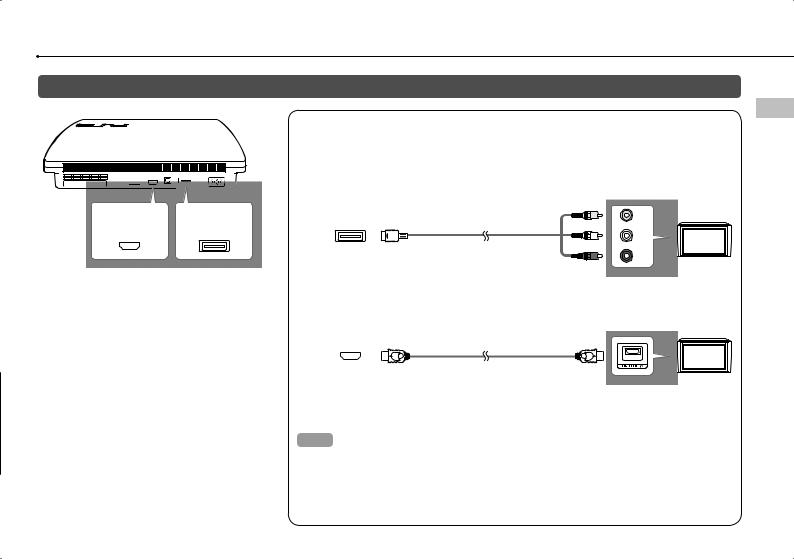
Getting started
Connection methods
|
HDMI OUT |
AV MULTI OUT |
|
connector |
connector |
||
|
If video is not displayed on the screen
If you change the type of cable used to connect the system to a TV, video may not appear on the screen. If video does not appear, turn off the system and then turn it on again by pressing the power button for at least five seconds (until the system beeps a second time). The video output setting will be reset and video will be output at standard definition (SD) resolution.
Connect your system to a TV
You can use any of the following methods to connect your system to a TV.
Video output in SD (Standard Definition) resolution
|
|
VIDEO |
|
AV MULTI OUT |
AV Cable |
AUDIO-L |
|
R- |
|||
connector |
|
||
|
TV |
||
|
|
Video output in HD (High Definition) resolution - HDMI™
HDMI OUT |
HDMI Cable (sold separately) |
connector |
TV |
|
Hints
For details about video output cable types and supported video modes, see "Video output on the PS3™ system" (
 page 16) and "Video output cable types" (
page 16) and "Video output cable types" (
 page 17).
page 17).
You can connect audio devices that support digital audio playback, such as an AV receiver for home entertainment use. For details, see "Connecting digital audio devices" (
 page 20).
page 20).
GB
started Getting
13
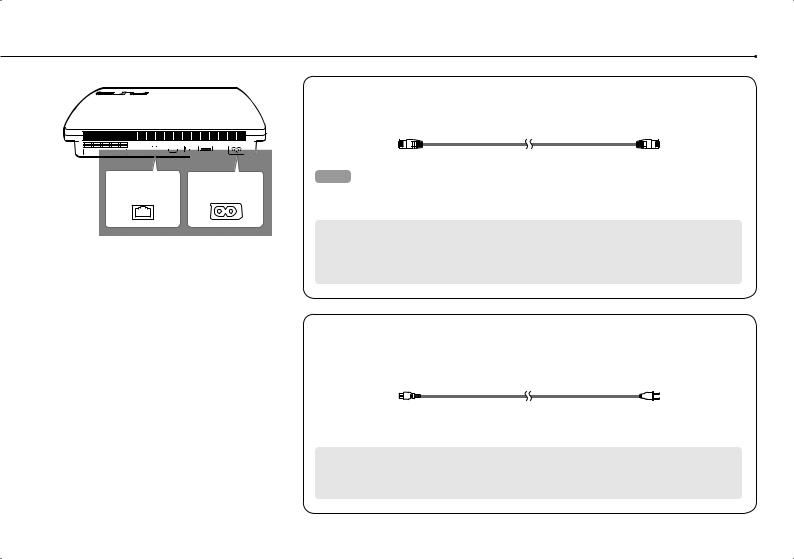
Getting started
LAN connector AC IN connector
Connect an Ethernet cable (sold separately)
Use an Ethernet cable to connect the system to the Internet.
Hint
You can use a wireless network connection to connect to the Internet without using an Ethernet cable. For details, see "Adjusting network settings" (
 page 28).
page 28).
 Caution
Caution
Do not connect a standard telephone line or other types of cords or cables that are not compatible with the system directly to the LAN connector on the system, as this may cause heat build-up, fire or malfunction.
Connect the AC power cord
After plugging the AC power cord into the electrical outlet, the power indicator on the PS3™ system will light up in solid red (
 page 21).
page 21).
Some regions and countries may use a different electrical outlet plug from the one illustrated.
 Caution
Caution
Do not plug the AC power cord for the system into an electrical outlet until you have made all other connections.
14

Performing initial setup of the system software
After turning on the system, perform initial setup.
1 Turn on the TV, and then switch the video input of the TV to match the input connector used by the PS3™ system.
2 Press the power button.
The power indicator turns green and the picture is displayed on the TV screen.
 Power indicator
Power indicator

 Power button
Power button
3 Connect the wireless controller to the system using a USB cable.
4 Press the PS button on the controller.
The system will recognise the controller. After it has recognised the controller, the initial setup screen will be displayed.
5 Perform initial setup.
GB
started Getting
Follow the on-screen instructions to enter settings for system language, time zone, date and time, and user name.
The screen for setting up the Internet connection will be displayed. When connecting using an Ethernet cable, basic settings will be selected automatically if you follow the on-screen instructions. When connecting over a wireless LAN, follow the instructions in "Adjusting network settings (wireless)" ( page 29) to set up the connection.
After the settings have been completed, the XMB™ menu ( page 11) will be displayed on the TV screen.
page 11) will be displayed on the TV screen.
Hints
When using an HDMI cable to connect the system to the TV, a screen for
changing the video output resolution will be displayed during initial setup. If you select [Yes] on the screen and then press the button, the optimal output resolution will be selected automatically.
button, the optimal output resolution will be selected automatically.
|
For details on entering text, see "Using the on-screen keyboard" ( page 34). |
|
Settings entered during initial setup can be changed under |
(Settings) or |
|
|
(Users). For details, refer to the online user’s guide |
|
|
(access from : eu.playstation.com/ps3/support/manuals). |
|
15

Getting started
Video output on the PS3™ system
The PS3™ system can output two types of resolution: HD and SD. Refer to the instruction manual for the TV in use to check which video mode is supported.
|
|
HD (High Definition) |
|
|
SD (Standard Definition) |
|
Video mode *1 |
1080p |
1080i |
720p |
576p |
|
576i *2 |
|
|
|
|
|
|
|
Aspect ratio |
16:9 |
16:9 |
16:9 |
16:9 |
|
16:9 |
4:3 |
|
4:3 |
||||
|
|
|
|
|
||
*1 This number indicates the number of scan lines. Note that "i" stands for "interlace" and "p" stands for "progressive". Using progressive results in high-quality video with minimal flickering.
*2 The video output setting on the system will display as [Standard (PAL)].
Screens showing the difference in resolution
HD screen |
SD screen |
16
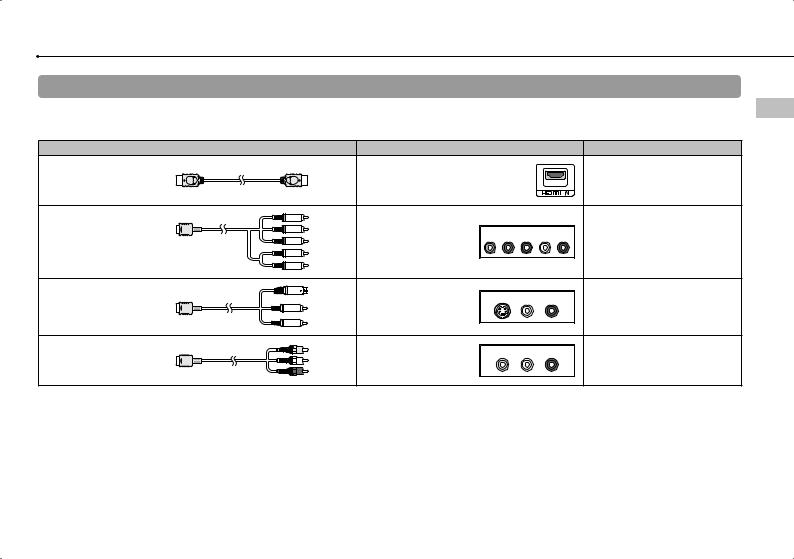
Video output cable types
The resolution displayed on the TV varies depending on the input connectors on the TV and the type of cable in use. Select a cable to match the TV in use.
Cable type |
Input connector on the TV |
|
|
Supported video modes*¹ |
|
HDMI Cable*² |
HDMI IN connector |
|
|
|
1080p / 1080i / 720p / 576p |
(sold separately) |
|
|
|
||
|
|
|
|
|
|
Component AV Cable*4 |
Component VIDEO IN |
COMPONENT VIDEO IN |
AUDIO IN |
|
|
Y PB/CB |
PR/CR |
L R |
1080p / 1080i / 720p / 576p / 576i*3 |
||
(sold separately) |
connector |
|
|
|
|
|
|
|
|
||
S VIDEO Cable |
S VIDEO IN connector |
S VIDEO |
L-AUDIO-R |
576i*3 |
|
(sold separately) |
|
|
|
||
|
|
|
|
|
|
AV Cable |
VIDEO IN connector |
VIDEO |
L-AUDIO-R |
576i*3 |
|
(supplied) |
(composite) |
|
|
|
|
|
|
|
|
||
*1 Depending on the type of TV or content to be played, some video modes may not be supported.
*2 Connect the system to the TV using an HDMI cable (sold separately). An HDMI cable can output both video and audio and enables you to enjoy digital-quality video and audio.
*3 The video output setting on the system will display as [Standard (PAL)].
*4 When the PS3™ system is connected to a TV using a component AV cable, analogue high-definition output is restricted to comply with the copyright protection technology used by Blu-ray (AACS). BD video software (BD-ROM) and BDs recorded with copyright-protected video content are output at interlaced standard definition (SD) resolution.
GB
started Getting
17

Getting started
Adjusting video output settings
Depending on the type of cables and the connectors used, you may need to adjust the PS3™ system's video output settings to display video at HD resolutions (
 page 16) on a TV.
page 16) on a TV.
If video is not displayed
Switch the video input of the TV to match the input connector used to connect to the system.
Turn off the system, and then turn it on again by pressing the power button for at least five seconds (until the system beeps a second time). The video output setting will be reset and video will be output at standard definition (SD) resolution.
1Select  (Settings)
(Settings) 
 (Display Settings)
(Display Settings)  [Video Output Settings], and then press the
[Video Output Settings], and then press the  button.
button.
2Select the input connector (
 page 17) in use on the TV, and then press the
page 17) in use on the TV, and then press the  button.
button.
If you select [HDMI], you will have the option to choose [Automatic] or [Custom] on the next screen. In most cases, select [Automatic], and video output settings will be completed automatically.
|
If you select [AV MULTI / SCART], you must choose the type of output signal |
18 |
on the next screen. In most cases, select [Y Pb/Cb Pr/Cr]. |
|
3 Confirm the screen, and then press the button.
button.
If you changed the connector in step 2, a screen for confirming the change will be displayed.
4 Confirm the settings, select [Yes], and then press the button.
button.
If you changed the connector in step 2, a screen for confirming the settings will be displayed.
5 Select the resolutions supported by the TV, and then press the button.
The resolution displayed on the TV varies depending on the input connector and the type of cable used ( page 17). The highest resolution you selected will be used for video output.
Depending on the connector selected in step 2, this screen may not be displayed.
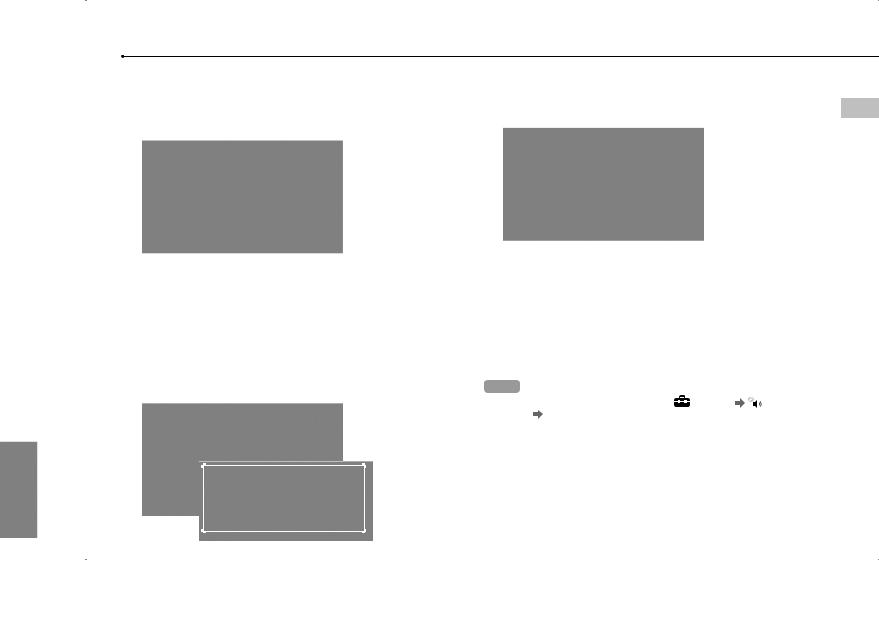
6 Confirm the settings, select [Yes], and then press the
 button.
button.
Depending on the connector selected in step 2 and the resolutions selected in step 5, this screen may not be displayed.
7 Select the type of TV, and then press the  button.
button.
If you selected [Standard (PAL)] or [576p] in step 5, a screen for selecting the TV screen size will be displayed. Adjust the setting to match the TV in use.
If you selected [720p] or a higher resolution in step 5, the TV type will automatically be set to 16:9 and the screen for selecting the TV screen size will not be displayed.
8 Confirm the settings, and then press the  button.
button.
The video output settings will be saved on the system.
9 Adjust audio output settings.
Continue on to adjust audio output settings. Adjust settings to match the TV or audio device in use.
If you select [HDMI], you will have the option to choose [Automatic] or [Manual] on the next screen. In most cases, select [Automatic].
If using a cable other than an HDMI cable to output audio from the TV, select [Audio Input Connector / SCART / AV MULTI]. If using an optical digital cable to output audio, select [Digital Out (Optical)] and choose the output format on the next screen.
10Confirm the settings, and then press the button.
button.
The audio output settings will be saved on the system.
Hints |
|
|
|
You can adjust audio output settings under |
(Settings) |
(Sound |
|
Settings) |
[Audio Output Settings]. |
|
|
If the TV in use supports 3D Stereoscopic display, a screen for setting the TV’s screen resolution will be displayed after step 2. Follow the on-screen instructions to adjust the settings. Connect the PS3™ system to a TV that supports 3D Stereoscopic display using an HDMI cable.
GB
started Getting
19

Getting started
Connecting digital audio devices
You can connect audio devices that support digital audio playback, such as an AV receiver for home entertainment use.
Audio output on the PS3™ system
The supported channels may vary depending on the output connector to be used.
PS3™ system output connectors |
Channels that can be used for output |
|||
2 Ch. |
5.1 Ch. |
7.1 Ch. |
||
|
||||
AV MULTI OUT connector |
|
|
|
|
DIGITAL OUT (OPTICAL) connector |
|
|
|
|
HDMI OUT connector |
|
|
|
|
Hints
When connecting a digital audio device to the system, go to  (Settings)
(Settings) 

 (Sound Settings)
(Sound Settings)  [Audio Output Settings], and then adjust the settings as necessary for the audio device.
[Audio Output Settings], and then adjust the settings as necessary for the audio device.
For simultaneous audio output from multiple connectors, go to  (Settings)
(Settings) 

 (Sound Settings)
(Sound Settings)  [Audio Multi-Output], and set the option to [On].
[Audio Multi-Output], and set the option to [On].
The system can output both audio and video through an HDMI cable. If both the TV and the audio device have HDMI connectors, you can output the TV picture to the TV through a connected audio device.
If a device is connected to the PS3™ system via an HDMI cable, do not turn off the device while the system is turned on (power indicator is lit solid green), as doing so may cause sound distortion or produce abnormal sounds.
Examples when connecting an audio device
An HDMI cable or optical digital cable can be used to connect an audio device to the PS3™ system.
HDMI cable |
Optical digital cable |
|
|||||||
|
|
|
|
|
|
|
|
|
|
|
|
|
|
|
|
|
|
|
|
|
|
|
|
|
|
|
|
|
|
|
|
|
|
|
|
|
|
|
|
|
|
|
|
|
|
|
|
|
|
|
Optical digital |
HDMI cable |
cable for audio |
(sold separately) |
(sold separately) |
Digital audio device
|
|
|
|
|
HDMI cable |
Video output cable for the |
|
|
|
|
|||||
|
|
|
|
|
(sold separately) |
TV in use ( page 17) |
|
|
|
|
|||||
|
|
|
|
|
|
|
|
|
|
|
|
|
|
|
|
|
|
|
|
|
|
|
|
|
|
|
|
|
|
|
|
|
|
|
|
|
|
|
|
|
|
|
|
|
|
|
|
|
|
|
|
|
|
|
|
|
|
|
|
|
|
|
|
|
|
|
|
|
|
|
|
|
|
|
|
|
|
|
|
|
|
|
|
|
|
|
|
|
|
|
|
|
|
|
|
|
|
|
|
|
|
|
|
|
|
|
|
|
|
|
|
|
|
|
|
|
|
|
|
|
|
|
|
|
|
|
|
TV |
TV |
20
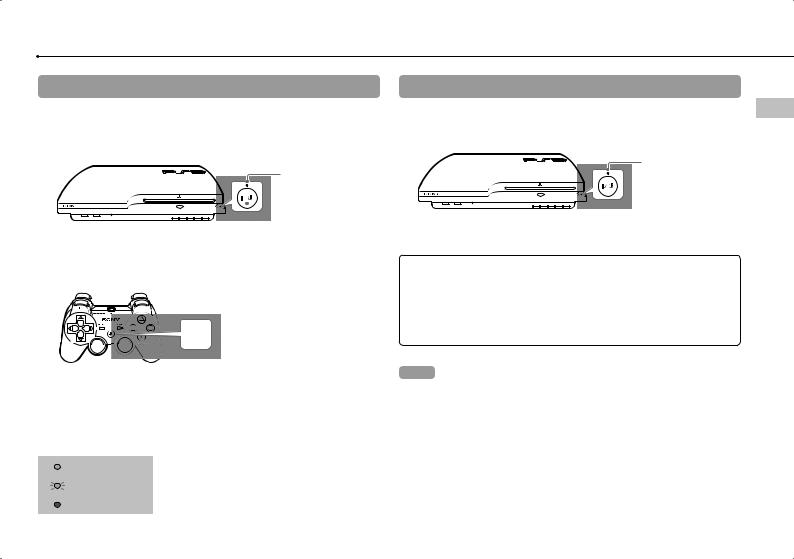
Turning the PS3™ system on and off
Turning on the system
1 Press the power button.
The power indicator lights up in solid green to indicate that the system is turned on.
Power indicator: solid green
 Power button
Power button
2 Press the PS button on the controller.
After the controller number is assigned, you can use the controller to operate the system.
 PS button
PS button
Power indicator status
You can check the power indicator on the PS3™ system to see the current status of the system.
Solid green |
System on |
|
|
Flashing green |
System turning off |
|
|
Solid red |
System off (in standby mode) |
|
|
Turning off the system
1 Press the power button.
The power indicator lights up in solid red.
Power indicator: solid red
 Power button
Power button
Notice
When the power indicator is lit solid green or flashing green, be sure to abide by the notices below. If you do not, data loss or corruption, or damage to the system may occur.
Do not unplug the AC power cord from the electrical outlet.
Do not move or change the position of the system.
Hints
Before using a wireless controller, you must first pair it with the system (
 page 22).
page 22).
You can also turn the PS3™ system on and off using the PS button on the wireless controller. If you use the PS button to turn on the system, the controller number will be assigned at the same time. To turn off the system, press the PS button for more than one second, and then follow the on-screen instructions.
You can also turn off the PS3™ system from the XMB™ menu. Select  (Users)
(Users) 
 (Turn Off System).
(Turn Off System).
If you will not be using the system for a long period of time, check that the power indicator is lit solid red, and then unplug the AC power cord from the electrical outlet.
GB
off and on system PS3™ the Turning
21

Using the wireless controller
Preparing for use
To use a wireless controller, you must first register or "pair" the controller with the PS3™ system and assign a number to the controller.
Step 1: Pair the system and the controller.
When using for the first time
When using with a different PS3™ system
Step 2: Assign a controller number.
Every time the system is turned on
Step 2: Assign a controller number
Each time you turn on the system, a number must be assigned to the controller by pressing the PS button.
Press the PS button. |
All of the port indicators flash. |
1 |
2 |
3 |
4 |
|
|
|
|
When the controller has been assigned a |
|||
number, the port indicators for the assigned |
|||
number turn solid red. |
|
|
|
1 |
2 |
3 |
4 |
Step 1: Pair the system and the controller
When using the controller for the first time or when using with a different PS3™ system, you must first pair the devices. If you turn on the system and connect the controller using a USB cable, the pairing will be completed automatically.
You can connect up to 7 controllers at one time. The controller number is shown by the number above the port indicators. For numbers 5-7, add the numbers of the lit indicators.
Example: Controller number 5 has been assigned.
1 2 3 4
1
USB cable (supplied) |
|
Check that the system is turned on |
|||
|
|||||
|
|
|
|
|
(power indicator is lit solid green). |
|
|
|
|
||
|
|
|
|
|
|
|
|
|
|
|
|
Hints
Pairing and assigning controller numbers can only be done when the system is turned on (power indicator is lit solid green).
When a paired controller is used with another PS3™ system, the pairing with the original system is cleared. Pair the controller with the system again if the controller has been used with another system.
If the controller or the system is turned off, the port indicators on the controller will turn off and the assigned number will be cleared.
22

Using the controller wirelessly
If you disconnect the USB cable, you can use the controller wirelessly. To use it wirelessly, the controller’s battery must be charged.
Hints
The USB cable can be connected or disconnected while the controller and the system are turned on.
If the controller does not function, press the PS button, and then reassign the controller number.
Charging the controller
With the system turned on (power indicator is lit solid green), connect the controller to the system using a USB cable. The port indicators of the controller flash slowly and charging begins. When charging has completed, the port indicators stop flashing.
Hints
The controller can be used while charging.
Charge in an environment where the temperature range is between 10°C - 30°C. Charging may not be as effective when performed in other environments.
The controller cannot be charged when the system is off (in standby mode).
Battery charge level
If you press and hold down the PS button for more than one second, you can check the battery charge level on the screen.
 Charge Level
Charge Level
The battery has plenty of charge.
The battery has started losing its charge.
The battery charge level is low.
The battery has no charge. The port indicators on the controller flash rapidly. Charge the controller.
Hint
Depending on the environment or the conditions of use, the remaining charge level may not display correctly and the battery duration may vary.
GB
controller wireless the Using
23

Playing content
Blu-ray Disc™ (BD)/DVD/CD
1 Insert the disc.
Insert the disc with the label side facing up.
Notices
Do not insert multiple discs or foreign objects into the disc slot, because this may cause the system to malfunction.
Discs that are not compatible with the system cannot be played. ( page 48)
page 48)
2 An icon is displayed in the XMB™ menu, and playback of the disc begins.
If the disc does not automatically start, select the icon for the disc from the XMB™ menu, and then press the button.
Ejecting a disc
Stop playback, and then press the eject button.

 Eject button
Eject button
24

Playing content on USB devices
You can connect external devices, such as devices that are compatible with USB Mass Storage Class, using a USB cable. Devices can be connected while the system is turned on. Refer also to the instructions supplied with the device.
1 Connect the USB device.
An icon is displayed on the screen.
External device such as a digital camera
2 Select the icon, and then press the button.
button.
A list of playable content is displayed.
Notices
Do not remove USB devices or turn off the system while data is being saved, loaded or deleted. Doing so may cause data loss or corruption.
When using a USB flash drive with a write-protect switch, do not operate the switch when the device is connected to the system. Doing so may cause data loss or corruption.
File formats that can be played or viewed
File formats that can be played or viewed on this system include ATRAC™, MP3, AAC, JPEG and MPEG-4. For the latest information, refer to the online user’s guide
(access from : eu.playstation.com/ps3/support/manuals).
Hints
Only files that are playable or viewable on the PS3™ system are displayed in
the column for the compatible category (Example: Image data is displayed under  (Photo)).
(Photo)).
Depending on the storage media, only a subset of the folders on the media may be displayed. If you select [Display All] from the options menu
(
 page 11), all folders saved on the media will be displayed.
page 11), all folders saved on the media will be displayed.
Notice
You should where possible make periodic back-ups of data stored on the hard disk drive as a precaution against possible loss or corruption. If for any reason software or data loss or corruption occurs, it is not possible to restore or repair the software or data. Note that SCEE will not be liable for any loss or corruption of data, files or software.
GB
content Playing
25

Playing games
Game compatibility
PlayStation®3 format software |
Can be played on this system |
PlayStation® format software
Can be played, but may not always perform correctly
PlayStation®2 format software |
Cannot be played on this system |
Playing games
Starting a game
When you insert the disc, the game starts automatically.
If the disc does not automatically start, select the icon for the disc from the XMB™ menu, and then press the  button.
button.
 Insert the disc with the label side facing up.
Insert the disc with the label side facing up.
Notice
Do not insert multiple discs or foreign objects into the disc slot, because this may cause the system to malfunction.
Quitting a game
During gameplay, press the PS button on the Wireless Controller. Then select  (Game)
(Game) 
 (Quit Game) to quit the game.
(Quit Game) to quit the game.
Hint
Depending on the type of software, such as PlayStation® format software,  (Quit Game) may not be displayed when the PS button is pressed. In this case, select [Quit Game] from the screen that is displayed.
(Quit Game) may not be displayed when the PS button is pressed. In this case, select [Quit Game] from the screen that is displayed.
Controller settings
You can change controller settings by selecting  (Settings)
(Settings) 

 (Accessory Settings).
(Accessory Settings).
Reassign |
If a controller port or number is specified by the software, |
|
you can use this setting to assign the appropriate controller |
||
Controllers |
||
port or number.* |
||
|
||
|
|
|
Controller |
You can set the vibration function to on or off. It is set to [On] |
|
Vibration Function |
by default. |
* You cannot assign controller port 2-D using this system.
Hint
You can change settings for the controller during gameplay by pressing the
PS button. Select  (Settings)
(Settings) 

 (Accessory Settings) in the XMB™ screen, or select [Controller Settings] from the screen that is displayed.
(Accessory Settings) in the XMB™ screen, or select [Controller Settings] from the screen that is displayed.
26
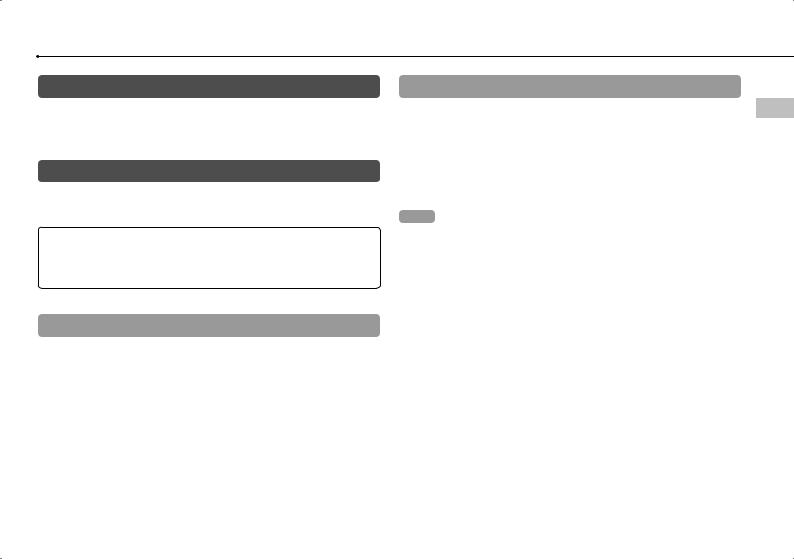
Saved data for PlayStation®3 format software
Saved data for PlayStation®3 format software is saved on the system’s hard disk. The data is displayed under  (Game)
(Game) 
 (Saved Data Utility).
(Saved Data Utility).
Saved data for PlayStation® format software
To save data from PlayStation® format software, you must create the internal memory cards on the hard disk and assign the cards to slots.
Notice
This system does not support playback of PlayStation®2 format software. Even if you create an internal memory card for PlayStation®2 format software, you will not be able to use it to play games.
Assigning slots
1 Select  (Game)
(Game) 
 (Memory Card Utility (PS/PS2)), and then press the
(Memory Card Utility (PS/PS2)), and then press the  button.
button.
2 Select the internal memory card that you want to use, and then press the  button.
button.
Select [Assign Slots], and then assign [Slot 1] or [Slot 2].
Hints
Depending on the software, slots may be preassigned. For details, refer to the instructions supplied with the software.
You can assign slots during gameplay. Press the PS button on the wireless controller, and then select [Assign Slots] from the screen that is displayed.
Creating internal memory cards
1 Select  (Game)
(Game) 
 (Memory Card Utility (PS/PS2)), and then press the
(Memory Card Utility (PS/PS2)), and then press the  button.
button.
2 Select  (Create New Internal Memory Card), and then press the
(Create New Internal Memory Card), and then press the  button.
button.
3 Select [Internal Memory Card (PS)], and then press the  button.
button.
Follow the on-screen instructions to complete the operation.
GB
games Playing
27

Adjusting network settings
Example of a network configuration (wired)
A wired network configuration requires items , and .
Example of a network configuration (wireless)
A wireless network configuration requires items and .
Network gateway device |
Router*3 |
Network gateway device |
Wireless router |
such as a DSL modem*1*2 |
such as a DSL modem*1*2 |
||
|
|
|
(access point) *3*4 |
To the Internet line |
|
To the Internet line |
|
Ethernet cable
PC
PC
*1 The connection method may vary depending on the environment in use. For example, you may be able to connect Ethernet cables directly into the wall outlet in housing complex units that have preinstalled LAN ports. If you are using such a network environment, you do not need a network gateway device.
*2 Dial-up Internet is not recommended.
*3 A router is a device that enables multiple devices to be connected to one Internet line. A router is necessary if a PC and a PS3™ system will be connected to the Internet at the same time using one Internet connection. A router is not necessary if the DSL or cable modem or other network device has built-in router functionality.
*4 A wireless router is a device that adds access point functionality to a router.
28
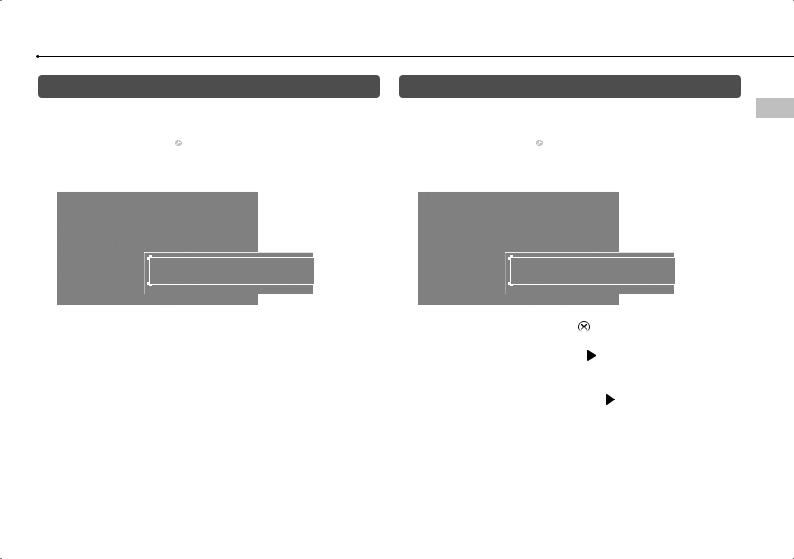
Adjusting network settings (wired)
1 Connect an Ethernet cable (sold separately) to the system.
2 Select  (Settings)
(Settings) 
 (Network Settings)
(Network Settings)  [Internet Connection Settings], and then press the
[Internet Connection Settings], and then press the  button.
button.
A confirmation message about the Ethernet cable is displayed.
3 Select [OK], and then press the  button.
button.
4 Select [Easy], and then press the  button.
button.
Basic settings are adjusted automatically, and a list of the settings is displayed. If the list is not displayed, you must adjust custom settings. Refer to the instructions supplied by your Internet service provider to adjust the custom settings (
 page 31).
page 31).
5 Perform the Internet connection test.
If the connection is successful, you will be able to connect to the Internet.
Adjusting network settings (wireless)
1 Check that an Ethernet cable is not connected to the system.
2 Select  (Settings)
(Settings) 
 (Network Settings)
(Network Settings)  [Internet Connection Settings], and then press the
[Internet Connection Settings], and then press the  button.
button.
A confirmation message about the Ethernet cable is displayed.
3 |
Select [OK], and then press the |
button. |
4 |
Select [Easy], and then press the |
button. |
|
Basic settings are adjusted automatically. |
|
5 |
Select [Wireless], and then press the button. |
|
GB
settings network Adjusting
29
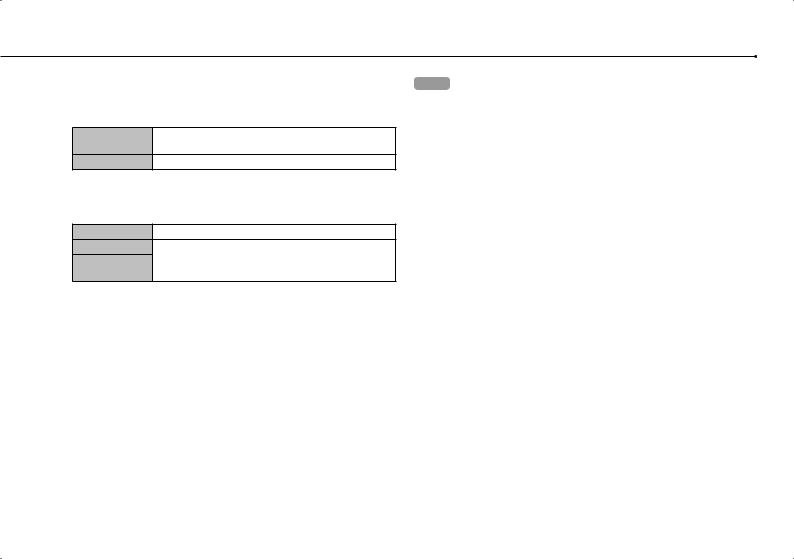
Adjusting network settings
6 Adjust wireless LAN settings.
Select the access point that you want to use. You can usually select [Scan] and choose an access point within range of your system.
Scan
System scans for a nearby access point. Select the access point that you want to use.
Enter Manually Specify the access point by entering its SSID manually.
7 Adjust the security settings for the wireless network.
Enter the encryption key for the access point.
None |
Encryption key is not set. |
WEP
Enter the encryption key. The encryption key field will
WPA-PSK/ display an asterisk (*) for each character you enter.
WPA2-PSK
8 Check the settings.
A list of the settings is displayed. If the list is not displayed, you must adjust custom settings. Refer to the instructions supplied by your Internet service provider to adjust the custom settings (
 page 31).
page 31).
9 Perform the Internet connection test.
If the connection is successful, you will be able to connect to the Internet.
Hints
SSID and WEP/WPA keys are types of security information that are required when connecting to an access point. If you do not have this information, contact the person who set up or maintains the access point.
Depending on the access point you use, you may need the MAC address for
the PS3™ system when connecting to the Internet. You can find the MAC address for the PS3™ system by going to  (Settings)
(Settings) 
 (System Settings)
(System Settings)  [System Information].
[System Information].
When connecting to the Internet wirelessly, signal interference may occur depending on the usage condition of the wireless network devices. If the Internet data transfer speed is decreased or the wireless controller does not function properly, try using a wired Internet connection.
30
